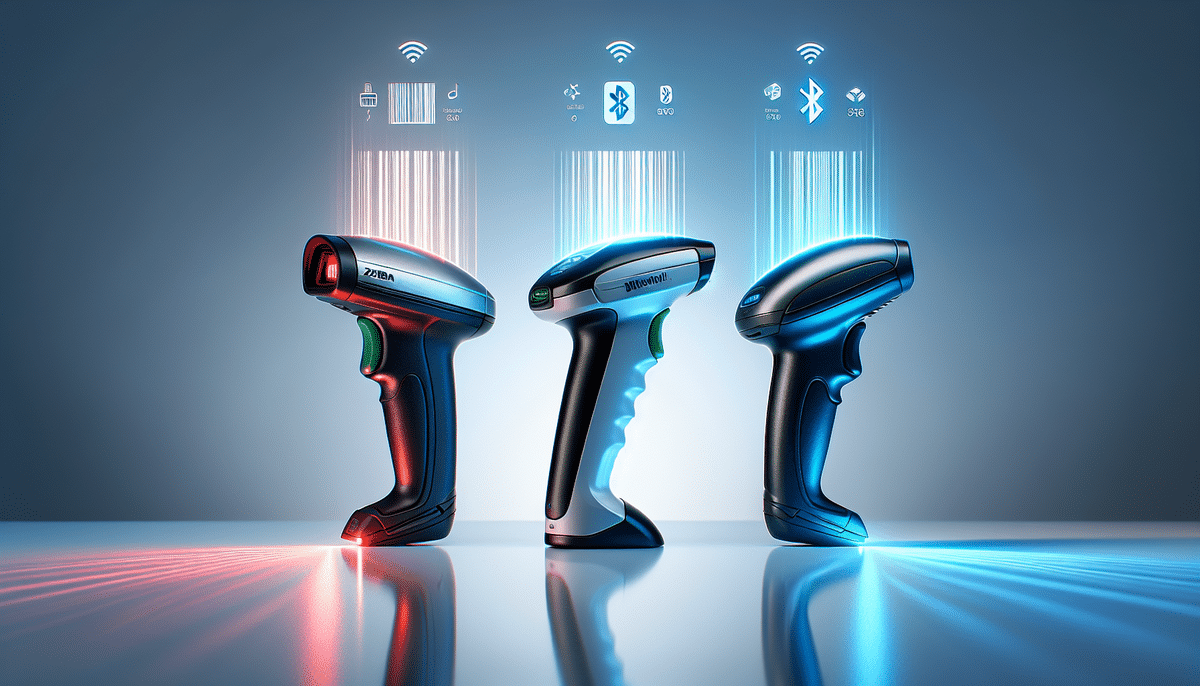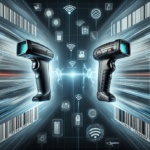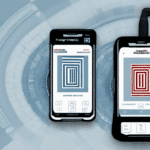Comparing Top Barcode Scanners: Zebra DS2208 vs Honeywell Xenon 1900g
Choosing the right barcode scanner is crucial for optimizing operations in various industries. This comprehensive comparison between the Zebra DS2208 and the Honeywell Xenon 1900g will help you determine which scanner best fits your business needs. We will evaluate these models based on specifications, performance, design, ergonomics, scanning capabilities, connectivity, battery life, pricing, and user reviews.
Specifications Overview
Understanding the technical specifications is fundamental in assessing the suitability of each scanner for your operations.
| Feature | Zebra DS2208 | Honeywell Xenon 1900g |
|---|---|---|
| Scan Range | 0-11.5 inches (1D) | 0-29.5 inches (1D) |
| Scan Speed | 220 scans/second | 190 scans/second |
| Scan Technology | 1D/2D | 1D/2D |
| Connectivity | USB, RS-232, Keyboard Wedge, IBM 46xx (RS485) | USB, RS-232, Keyboard Wedge, IBM 46xx (RS485), Bluetooth |
| Weight | 5.9 oz | 7.9 oz |
| Dimensions (LxWxH) | 6.5 x 2.6 x 3.9 inches | 4.1 x 2.9 x 6.3 inches |
| Durability | Drop-resistant up to 5 feet, IP42 rating | Drop-resistant up to 6 feet, IP41 rating |
Both scanners support 1D and 2D barcode scanning with multiple connectivity options. The Honeywell Xenon 1900g offers an extended scan range and Bluetooth connectivity, providing greater flexibility for various applications.
Performance Analysis
Scanning Efficiency
The Zebra DS2208 boasts a scan speed of 220 scans per second, slightly outpacing the Honeywell Xenon 1900g, which operates at 190 scans per second. This higher speed can enhance productivity in high-throughput environments.
Scanning Range and Accuracy
The Honeywell Xenon 1900g's extended scan range of up to 29.5 inches allows it to handle larger and more diverse barcode sizes, making it ideal for environments with varying barcode placements. Meanwhile, the Zebra DS2208 provides accurate scanning within a more limited range, suitable for standard applications.
Durability and Reliability
Both scanners are designed for durability, with the Xenon 1900g offering superior drop resistance and a slightly lower IP rating for dust and water resistance. This makes the Honeywell model more suitable for harsh environments such as industrial settings and warehouses.
Design and Ergonomics
Build Quality
The Zebra DS2208 features a lighter and more compact design, weighing 5.9 oz, which enhances user comfort during prolonged use. In contrast, the Honeywell Xenon 1900g is bulkier and weighs 7.9 oz, contributing to its ruggedness and durability.
Ergonomic Features
The DS2208’s slimmer, contoured grip reduces user fatigue, making it preferable for extensive scanning tasks. The Xenon 1900g offers a wider, sturdier grip for a secure hold, though it may be less comfortable over long periods.
Scanning Angle and Resolution
The Zebra scanner provides a wider scanning angle, facilitating the capture of larger barcodes efficiently. The Honeywell model, however, offers higher resolution scanning, adept at reading smaller or more complex barcodes.
Connectivity and Integration
Connection Options
Both scanners support USB, RS-232, Keyboard Wedge, and IBM 46xx (RS485) connections. The Honeywell Xenon 1900g additionally includes Bluetooth connectivity, allowing for wireless integration and greater mobility.
Ease of Setup
The Zebra DS2208 is renowned for its user-friendly setup process, requiring minimal technical expertise. Conversely, the Honeywell Xenon 1900g’s advanced features may necessitate more technical knowledge during initial configuration.
Software Integration
Both scanners offer software development kits (SDKs) for custom application development. The Zebra DS2208’s SDK is particularly noted for its comprehensiveness and ease of use, facilitating seamless integration with existing systems.
Battery Life and Charging
Reliable battery performance is essential for uninterrupted operations.
- Zebra DS2208: Features a rechargeable battery that can be charged via USB in approximately 2.5 hours, providing all-day usage.
- Honeywell Xenon 1900g: Requires around 4 hours to fully charge but includes a charging cradle that supports simultaneous device charging and firmware updates, ensuring continuous operation through quick battery swaps.
Pricing and Value
Cost-effectiveness is a key factor in decision-making:
- Zebra DS2208: Generally more affordable, making it a budget-friendly option for businesses seeking reliable scanning without a significant investment.
- Honeywell Xenon 1900g: Priced higher due to additional features like Bluetooth connectivity and enhanced durability, offering better value for businesses with specific operational needs.
User Reviews and Real-World Performance
Zebra DS2208 Feedback
Users appreciate the DS2208 for its advanced scanning capabilities, ease of use, and affordability. Its compact design is favored for user comfort, though some note the limited scan range and absence of Bluetooth as drawbacks.
Honeywell Xenon 1900g Feedback
The Xenon 1900g receives praise for its robust build quality, extended scan range, and Bluetooth connectivity. However, the bulkier design and higher price point are occasionally cited as potential negatives.
Testing Results
In practical applications, both scanners demonstrate high accuracy and efficiency. The Zebra DS2208 excels in speed, while the Honeywell Xenon 1900g shines in versatility and durability, making each suitable for different operational environments.
Conclusion: Which Scanner Suits Your Business?
Both the Zebra DS2208 and Honeywell Xenon 1900g offer robust features tailored to diverse business needs. If your operations prioritize speed, affordability, and ease of integration, the Zebra DS2208 is an excellent choice. On the other hand, if you require extended scanning range, Bluetooth connectivity, and enhanced durability for demanding environments, the Honeywell Xenon 1900g stands out as the superior option.
Evaluate your specific requirements, budget, and operational challenges to select the barcode scanner that will best enhance your business efficiency and productivity.






















